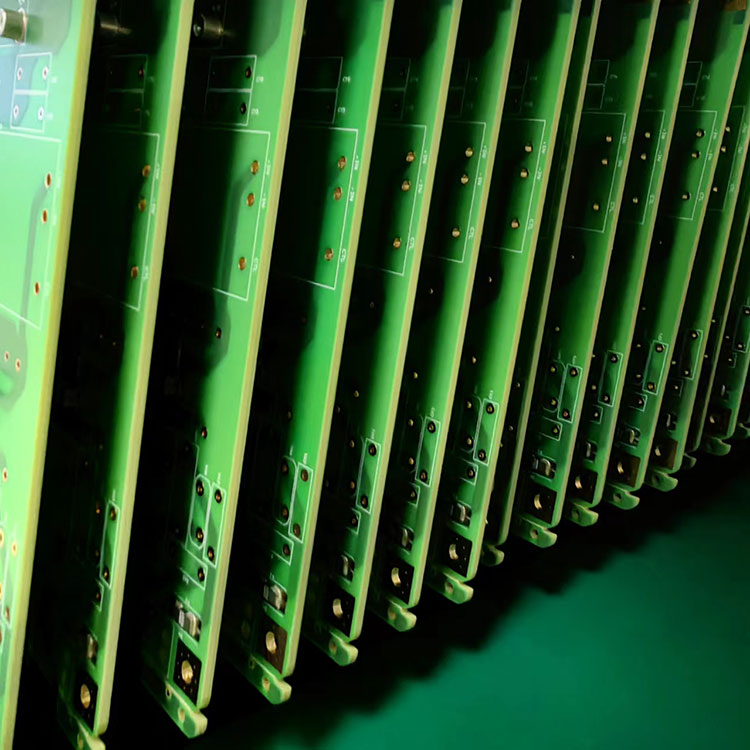
Myth #1: Rogers PCBs are too expensive to manufacture.
Fact: While Rogers PCBs may be slightly more expensive than traditional FR-4 boards, their longevity and high performance make them a cost-effective option in the long run.
Benefit #1: High frequency stability, making it ideal for telecommunications and wireless devices.
Benefit #2: Low signal loss and high thermal conductivity, improving overall device performance.
Benefit #3: Lower dielectric constant compared to other materials, allowing for smaller board designs and increased power handling capabilities.
Rogers PCBs are commonly used in the aerospace, defense, telecommunications, and medical device industries.
One potential downside is the slightly higher cost compared to traditional PCB materials. Additionally, Rogers PCBs may require longer lead times due to the specialized manufacturing processes involved.
In conclusion, while there are some misconceptions about Rogers PCBs, their superior performance and longevity make them a popular choice in many industries. If you're looking to incorporate Rogers PCBs into your electronic devices, be sure to work with a reputable manufacturer with experience in producing high-quality Rogers PCBs.
Hayner PCB Technology Co., Ltd. is a leading manufacturer of high-quality Rogers PCBs. With over 10 years of experience in the industry, our team of experts can help you design and manufacture a PCB that meets your exact specifications. Contact us today at sales2@hnl-electronic.com to learn more.1. Rogers Corporation (2006). “Why Choose Rogers High Frequency PCB Materials?” Retrieved from https://rogerscorp.com/documents/1368/Why-Choose-Rogers.pdf
2. The Printed Circuit Board Guide. (2019). “Rogers PCB: A Comprehensive Guide.” Retrieved from https://www.pcbguide.com/rogers-pcb/
3. Li, Y., Sun, X., & Yuan, F. (2017). Design and Optimization of a 1GHz Wave Receiver based on Rogers PCBs. Wireless Personal Communications, 97(4), 5685-5698.
4. Park, B., & Hong, S. (2010). Development of Ceramic Frame for RFID Reader using Rogers PCBs. Journal of Ceramic Processing Research, 11(3), 334-337.
5. Emeagi, P. (2016). Medical Applications of Rogers PCBs. Medical Device Technology, 27(4), 43-47.
6. Wang, J., Wang, Y., & Xu, Z. (2018). Heat Transfer Study of Thermal Management System Using Rogers PCBs. Journal of Electronic Packaging, 140(4), 1-8.
7. Sheon, J., & Lee, W. (2012). Development of a High-Speed Transceiver Using a Rogers PCB. Journal of Electrical and Electronic Engineering, 5(3), 162-168.
8. Guo, L., & Ma, X. (2015). Dielectric Properties and Power Handling Capabilities of Rogers PCB Materials. IEEE Transactions on Components, Packaging and Manufacturing Technology, 5(10), 1453-1459.
9. Park, H. K., Hong, J. O., & Jeon, S. B. (2019). Characterization of Mixed-Mode Fracture Toughness of Rogers-based Hybrid Structure for Printed Circuit Board under Various Environmental Reliability Tests. Journal of Composite Materials, 54(27), 3729-3737.
10. Zhang, H., Wu, W., & Zhang, H. (2019). High-Frequency Hybrid Body-Fitted Grid Generation Method for Rogers PCB Antenna. Journal of Communication Engineering, S1, 1-7.
TradeManager
Skype
VKontakte
